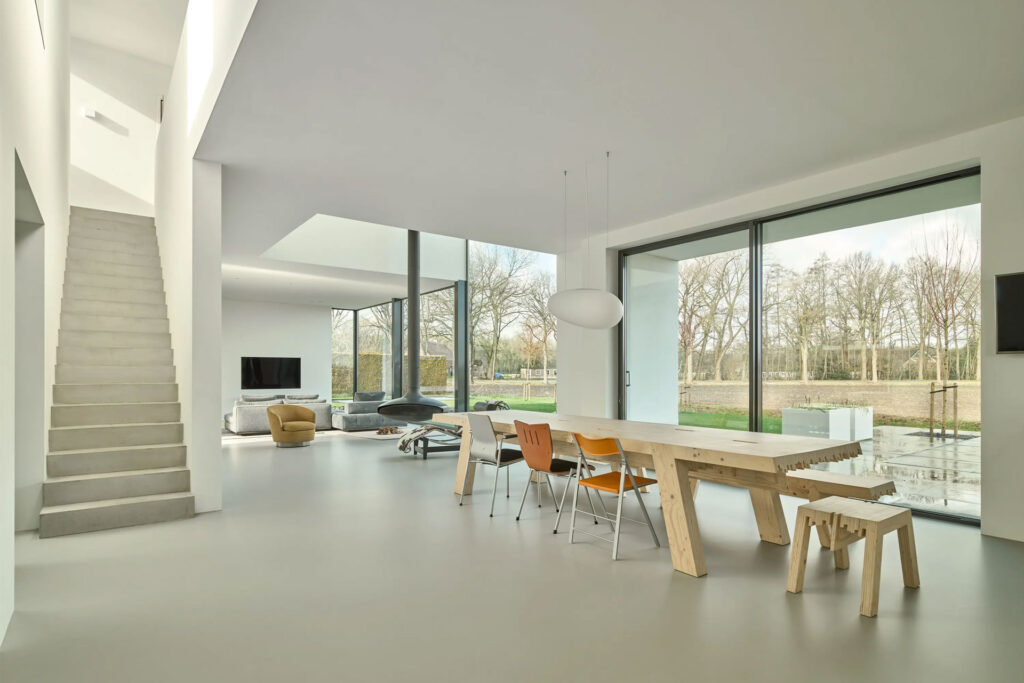
Acoustic Plasterboard vs Normal Plasterboard: Which is the Right Choice for Your Home?
There are two standard thicknesses of Plasterboard
Renovating your home can be an exciting and rewarding experience. Whether you’re updating a single room or giving your entire home a makeover, there are many decisions to make. One important choice you’ll need to consider is the type of plasterboard to use. Two popular options are acoustic plasterboard and normal plasterboard. In this article, we will explore the differences between these two materials and help you make an informed decision for your renovation project.
There are two standard thicknesses of plasterboard – 9.5 mm and 12.5 mm. The plasterboard sizes for ceilings are 9.5mm or 10mm. People assume that they must use thicker plaster, but that is actually not true. Thicker plasterboard will stick harder to the ceiling and will be difficult to seal joints if needed.
What is Acoustic Plasterboard?
Acoustic plasterboard, also known as soundproof plasterboard, is a type of plasterboard specifically designed to reduce sound transmission. It is made by sandwiching a layer of sound-insulating material, such as gypsum, between two layers of plasterboard. This additional layer helps to absorb and dampen sound waves, minimizing noise transfer between rooms.
Benefits of Acoustic Plasterboard
Noise Reduction: Acoustic plasterboard is highly effective at reducing noise transmission, making it an excellent choice for rooms that require sound insulation. It can help create a quiet and peaceful environment, perfect for bedrooms, home offices, or media rooms.
Improved Privacy: By reducing sound transfer, acoustic plasterboard can enhance privacy within your home. This is particularly beneficial if you have shared walls with neighbors or if you want to create distinct areas within your living space.
Sound Control: If you love to play music, watch movies, or simply enjoy peace and quiet, acoustic plasterboard can provide better sound control. It helps prevent sound leakage, ensuring that your activities won’t disturb others in the house or nearby.
Easy Installation: Acoustic plasterboard is relatively easy to install, making it a popular choice for both DIY enthusiasts and professional contractors. It can be fixed to walls and ceilings using standard plasterboard installation techniques, saving you time and effort during the renovation process.
What is Normal Plasterboard?
Normal plasterboard, also known as standard plasterboard or drywall, is the most commonly used type of plasterboard in residential construction. It is made of gypsum plaster encased in a layer of heavy-duty paper. Normal plasterboard is known for its versatility, affordability, and ease of installation.
Benefits of Normal Plasterboard
Cost-effective: Normal plasterboard is generally more affordable than acoustic plasterboard, making it a budget-friendly choice for homeowners. If sound insulation is not a top priority for your renovation project, normal plasterboard can offer a cost-effective solution.
Versatility: Normal plasterboard can be used in various applications, including walls, ceilings, partitions, and even decorative features. It can be easily cut, shaped, and molded to fit any design requirements, giving you flexibility in your home renovation.
Fire Resistance: One important advantage of normal plasterboard is its fire-resistant properties. It provides a passive fire protection barrier, helping to prevent the spread of fire and protecting the structural integrity of your home.
Choosing the Right Plasterboard for Your Home
When it comes to deciding between acoustic plasterboard and normal plasterboard, there are several factors to consider. First and foremost, assess your specific needs and priorities for the rooms you are renovating. If sound insulation is a key requirement, such as in bedrooms or home theaters, acoustic plasterboard may be the best choice. On the other hand, if you are working within a tight budget or if noise reduction is not a major concern, normal plasterboard can provide a cost-effective solution.
Additionally, consult with professionals in the field, such as renovators or soundproofing experts, to get guidance on the most suitable plasterboard for your specific project. They can assess your home’s layout, construction materials, and environmental factors to help you make an informed decision.
Remember, it’s crucial to comply with local building regulations and obtain any necessary permits for your home renovation. If you need guidance on how to get a permit for home renovation, consult our guide on the topic for a step-by-step walkthrough.
In conclusion, both acoustic plasterboard and normal plasterboard have their unique advantages and uses. Consider your specific needs, budget, and expert advice when making the decision for your home renovation project. By selecting the right plasterboard, you can create a comfortable and functional living space that meets all your requirements. So go ahead, let your creative ideas flow, and transform your home into the haven you’ve always envisioned. For more information you can contact Tango Interiors and we will send you a free Quote based on your needs. Take a look at our Plastering Service .

